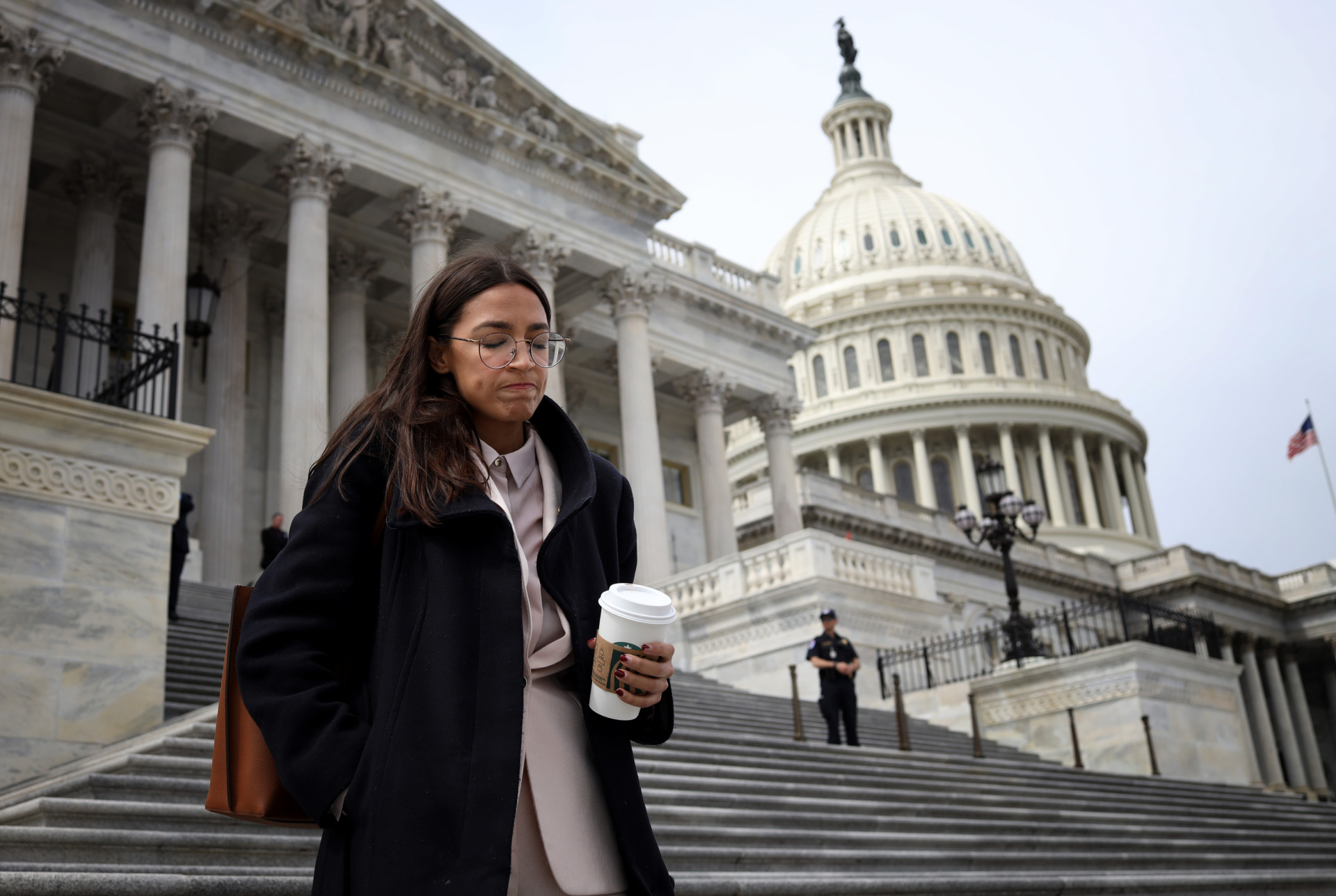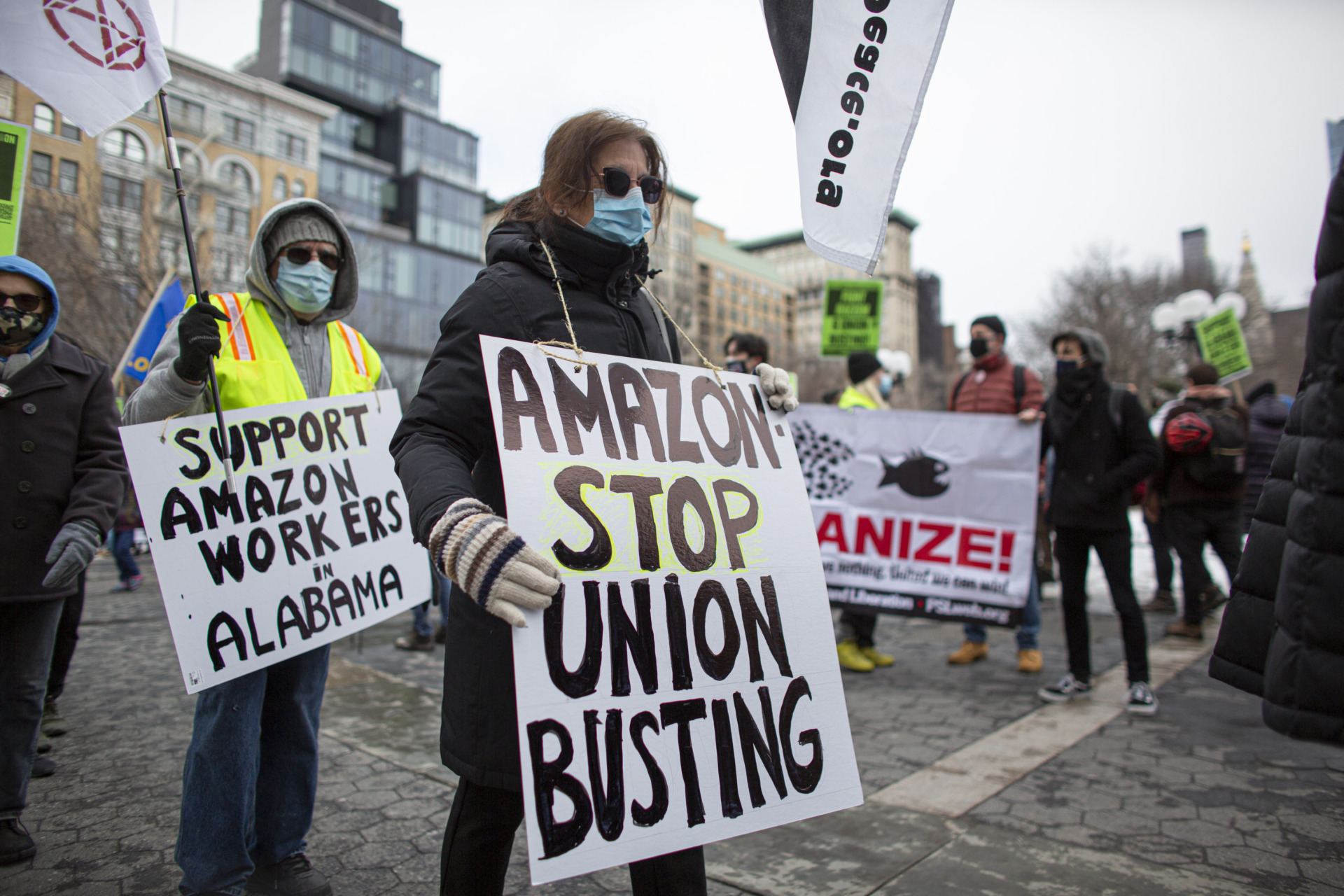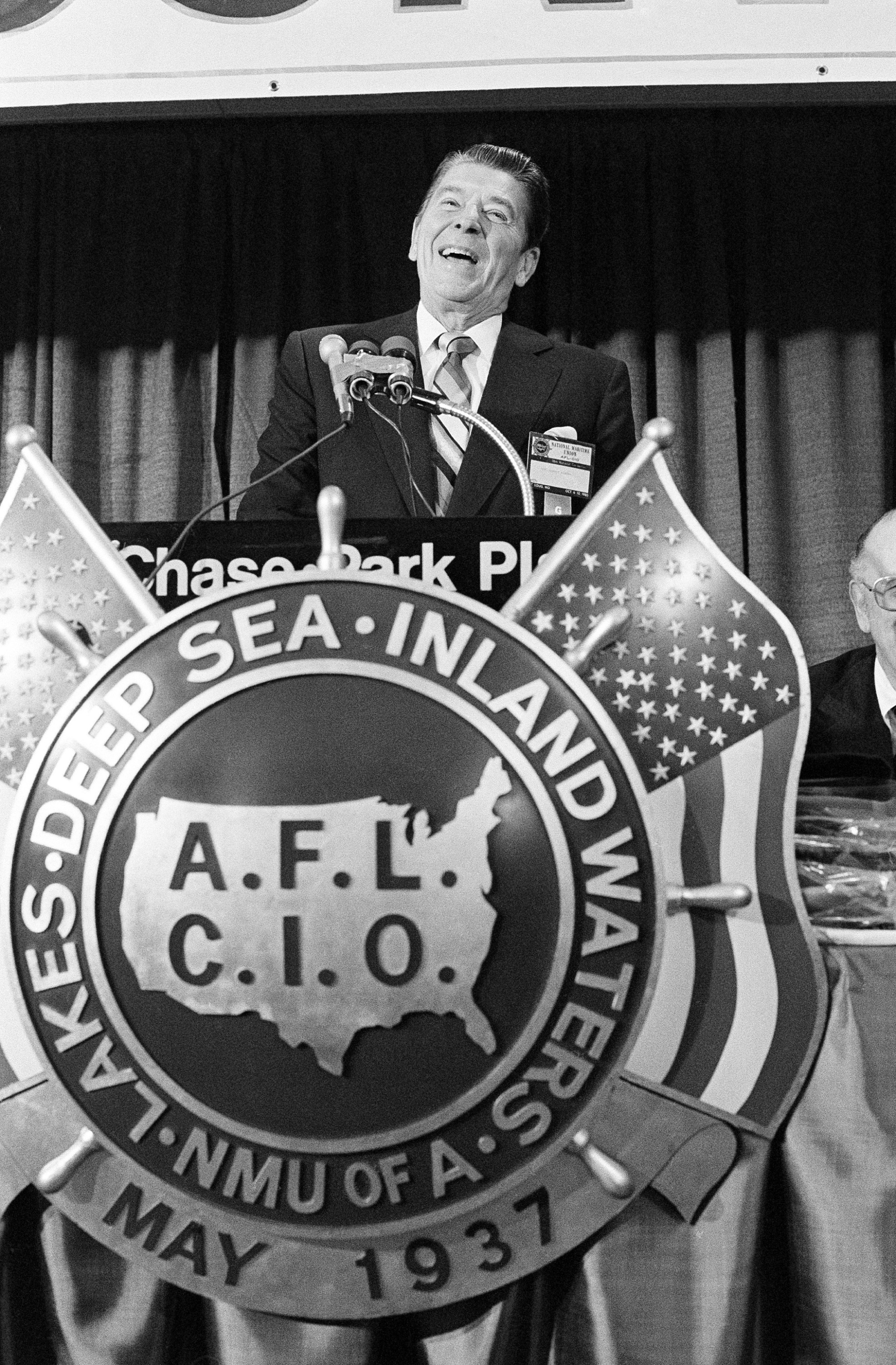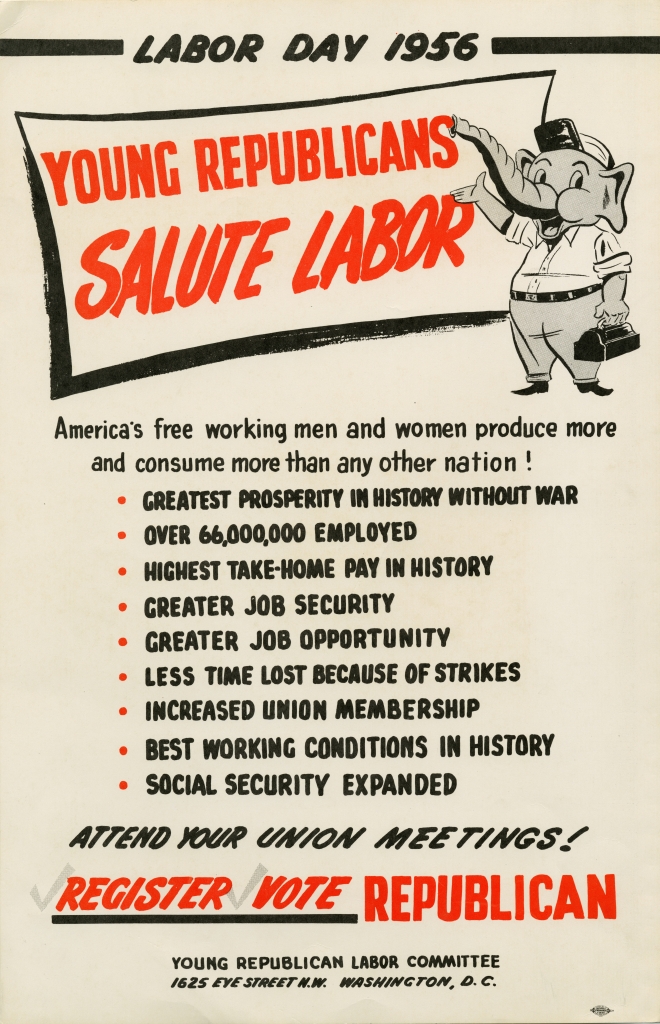The Moderate Left vs. the Extreme Left
“Big Labor May Save New York From AOC’s Socialism: Even public-sector unions favor old-style incumbent Democrats to radical insurgents like her.” That was the headline atop an opinion piece in the Wall Street Journal on February 19, referring, of course, to the extreme leftism of Rep. Alexandria Ocasio-Cortez.
In the piece, Steven Malanga argues that New York City’s labor unions are opposing AOC because she’s too left-wing for them. And this issue matters most immediately because the nation’s largest and most influential city will elect a new mayor this year. AOC herself is not a candidate, but she will seek to help elect a like-minded comrade.
In addition, New York state, dominated by the city, will hold gubernatorial and senatorial elections next year, and AOC is considered to be a potential primary challenger to Sen. Chuck Schumer.
According to Malanga, the unions know that AOC is aligned with the Democratic Socialists of America (DSA), an outfit that routinely attacks unions for being insufficiently left-wing; Malanga quotes the DSA’s declared strategy for “militant . . . classwide struggles.” However, most unionized workers are interested in bigger paychecks and greater benefits, not the revolutionary stuff of, say, Cuba or Venezuela.
Indeed, unions blame AOC for blocking Amazon’s expansion into New York City, which would have brought in 25,000 jobs, as well as billions in wages and revenues. As one construction union chief said of her influence, “Politics and pandering have won out over a once-in-a-generation investment in New York City’s economy.”
We might note that when Malanga talks about unions as a bulwark against socialism, he’s not just talking about construction unions, which are traditionally somewhat conservative; he’s also talking public employee unions, including the teachers’ union. Needless to say, nobody thinks of the teachers’ unions as conservative—unless, of course, one is comparing them to AOC and the DSA.
At the same time, nobody thinks of the Wall Street Journal as a pro-labor union publication. So when the Journal lauds unions as a bulwark against hard-leftism, the relationship is entirely tactical: If and when the threat from AOC goes away, the Journal’s affection for unions will also go away.
Yet almost certainly, AOC is not going away. Indeed, at age 31, she rates now as one of the brightest stars in the Democratic Party, and she could continue to shine for decades to come.
So AOC’s likely long-term presence—and threat—might cause Republicans to think about their traditional, mostly hostile stance toward labor unions. The GOP might need the unions, just as Malanga says, as an additional bulwark against socialism.

Rep. Alexandria Ocasio-Cortez (D-NY) leaves the U.S. Capitol after passage of the stimulus bill on March 27, 2020 in Washington, DC. (Win McNamee/Getty Images)
So that raises a tantalizing possibility: Perhaps the Republican Party will wish to actively court the labor vote.
The Democrats have a firm grip on the urban left, and they also have been doing well in affluent suburbs. Today, virtually all the suburban House seats around big cities such as New York, Los Angeles, Chicago, and Philadelphia are represented by Democrats, and the Dems have even gained seats in suburban Atlanta, Houston, and Dallas. In fact, Democrats hold the seats representing the ten wealthiest Congressional districts in America, as well as 41 of the top 50.
Yes, of course, Republicans should look to win back as many of those seats as possible, and yet at the same time, we should realize that the two parties are in the midst of an historic realignment—as Democrats become the party of the rich (and the poor), while Republicans become the party of the middle.
As it happens, just last year, this author wrote a piece for Breitbart News headlined, “‘Essential Workers’ Point the Way to a Republican Workers Party,” and then a few weeks later followed it up with a similarly themed piece, “The Republican Party of Cops, Nurses, and Other Workers—All Together.”
Since then, leading Republican figures such as House Minority Leader Kevin McCarthy, Sen. Josh Hawley, Sen. Marco Rubio, and Sen. Rick Scott have declared that the GOP is now the “workers party.” Moreover, a new NBC News poll bears McCarthy out: Support for Republicans is rising among the White working class, as well as among the Hispanic and Black working class.
To be sure, the Democrats won’t easily give up their claim to the working class. President Joe Biden has a decades-long connection to labor leadership, and just last week he brought labor chieftains to the White House, declaring, “I want to make it clear I’m a labor guy.”
Yet on the other hand, Biden supported the free-trade deals that are anathema to unions, including the North American Free Trade Agreement, Permanent Normal Trade Relations with China, and the Trans-Pacific Partnership.

People hold placards during a protest in support of Amazon workers in Union Square, New York, on February 20, 2021. (KENA BETANCUR/AFP via Getty Images)
More recently, the Biden administration had been curiously quiet about the attempt of Amazon workers in Bessemer, Alabama, to unionize; that unionization vote, of course, pits workers against the mighty Jeff Bezos, CEO of Amazon and owner of the Washington Post. Finally, on February 28, just as the voting was starting, Biden released a video urging the workers to vote but conspicuously not telling them which way to vote, yea or nay on the union. So we can see: Biden seems to need the good will of Bezos and the Post just as much as he needs the workers.
In other words, “Middle Class Joe,” the fella born in blue-collar Scranton, PA, must contend with “Globalist Joe,” who takes his cues from Wall Street, Hollywood, and Big Tech. These neoliberal nodes support not only free trade, but also a slew of social and cultural issues that fall into the category of “woke.”
Yet perhaps the greatest flashpoint is another cause connected to wokeism, namely, environmentalism.
The Greens Defeat the Blue Collars
For a half-century or more, one piercing critique of the green movement is that it has pursued exotic environmental goals at the expense of jobs and economic growth. That is, the mostly affluent greens have been besting the non-affluent blues (blue collars).
Indeed, one can look at the brief track record of the new Biden administration and see already that the greens are winning—perhaps because the 46th president owes more to green donors than to ordinary voters. Thus Biden hired John Kerry, the ultimate environmental elitist, to be his “climate czar,” and on his first day in the Oval Office, he killed the Keystone Pipeline, taking away thousands of blue-collar jobs.
Yet of course, greens want still more, and they even want it to be Greta Thunberg-friendly. As the trendy-left New Republic magazine argued, “Canceling the Keystone XL pipeline was a solid start. But the Biden administration needs to do more than reward the youth climate movement with opening-month executive orders.” [emphasis added]
Yes, that’s what avant-garde greens want now: a specific Biden pander to the “youth climate movement,” which consists, of course, mostly of the children of rich green liberals; the magazine suggested “establishing a youth council to advise the Biden administration on climate and other policy matters.” Ah yes, just what the nation needs: a White House office to host trust-fund kids.
In the meantime, the young adults of blue-collar Middle America are more likely to be looking for jobs or perhaps attending a state college.
Out of this obvious class cleavage, green vs. blue, we can see political peril for Democrats—and opportunity for Republicans.
A February 21 headline in Politico spelled it out: “Biden squeezed between promises to go green and bolster unions.” As the article detailed, Biden will have to decide whether to import solar panels from China, so as to reach his carbon targets sooner and cheaper, or else to insist that the solar panels be made in the USA.
In the meantime, blue-collar labor chieftains are noticing that their people are getting the short end of the stick. As Terry O’Sullivan, general president of the Laborers’ International Union of North America, told Politico:
It’s pie-in-the-sky bull[bleep] about these green jobs being good middle-class jobs, because they’re not. I’m concerned about union members and union families being left behind . . . and I think they’ve already been left behind.
So now we can see the Republican opportunity: to swoop in and come down, hard, on the side of the workers. That is, not just to champion the Keystone Pipeline, but also to demand that the Green New Deal, if there must be one, be Made in USA. (As this author has argued, and as Rep. Matt Gaetz has also argued, a carbon-reduction plan that included rural carbon capture could actually be a boon to the boonies.)

In this photo from February 27, 2012, workers assemble solar panels by hand on the factory floor of the Chinese company Suntech in the eastern Chinese city of Wuxi. The success of Chinese companies like Suntech, the world’s biggest producer of solar panels, became a trade issue as American companies have accused them of dumping in the U.S. market and receiving unfair subsidies from Beijing. (PETER PARKS/AFP via Getty Images)
Solidarity Is Not Woke
Working people are not woke. Yes, they want clean air and clean water, but the avant-garde preoccupations of Manhattan and Beverly Hills are not their preoccupations. Regular folks are focused on paying the rent or the mortgage, not on alleviating their guilt.
If Republicans want the votes of blue collars—including Hispanic blue collars—a decent respect should be paid to their opinions; yes, workers tend to be against abortion, against gun control, and against wokery, and yet they are in favor of things too, including higher wages, a dignified workplace in which they have an organized voice, and guaranteed health care.
In other words, the working class is less libertarian and more communitarian—the Bible is a lot more popular than Atlas Shrugged.
Moreover, if workers get their fair share, they will also be against The Communist Manifesto or whatever watered-down version of that sinister document AOC and the DSA might be trying to peddle. Why? Because if working people have a piece of the pie, they will want to protect it. And so they will be, yes, a bulwark against socialism.
For the non-rich, non-poor—the folks in the middle—a key ideal is solidarity: all for one and one for all.
It’s that spirit of solidarity that smart politicians have always been able to to tap into. For instance, here’s Franklin D. Roosevelt, speaking to a blue-collar audience in Boston in 1944, when World War Two was summoning up the best in all Americans regardless of ethnicity or class:
Today, in this war, our fine boys are fighting magnificently all over the world and among those boys are the Murphys and the Kellys, the Smiths and the Joneses, the Cohens, the Carusos, the Kowalskis, the Schultzes, the Olsens, the Swobodas, and—right in with all the rest of them—the Cabots and the Lowells. All of these people, and others like them, are the life-blood of America.
We can observe that this is the way the vast majority of Americans wish to think of themselves: as patriots in the melting pot of Team America, ready to do their fair share—perhaps even, if need be, making the ultimate sacrifice—as long as everyone is expected to be a part of the overall effort. It’s that non-shirking spirit that wins wars and makes a nation great. Today, moreover, we could update FDR’s speech and include in the melting pot “the Garcias,” “the Khans,” “the Patels,” and “the Yangs.”
Applied to the homefront, this all-together spirit means solidarity in the workplace. As Breitbart News’ Rebecca Mansour observed, “There’s something universal about workers and power structures and the politics of left/right. The working class is not prone to socialism. They’re prone to unionism.” And so, she added, echoing the Journal’s Steven Malanga, “Unions have been—and should be—the bulwark against socialism and communism.”
A Case Study in Winning Solidarity
Dwight Eisenhower, West Point class of 1915, was a careerist in that most solidaristic of institutions: the U.S. military. Having led millions of men and women to victory in the European Theater of World War Two, he could easily see the value of solidarity on the homefront.
As Ike said in a presidential campaign speech to the American Federation of Labor in New York City on September 17, 1952:
Today in America unions have a secure place in our industrial life. Only a handful of unreconstructed reactionaries harbor the ugly thought of breaking unions. Only a fool would try to deprive working men and women of the right to join the union of their choice.
That November, Ike was indeed well-liked: He won more than 55 percent of the national popular vote, carrying 39 of 48 states—including New York State.
And once in office, the 34th president, a Republican, was careful to balance capital and labor; he was pro-business, and yet he was also pro-labor. That was attested by a 1956 re-election campaign handbill, published by the Young Republican Labor Committee; the sheet features a cartoon of a happy worker-elephant carrying a proletarian lunchbox and touting such bullet points as, “INCREASED UNION MEMBERSHIP.”
One hardly need mention that Eisenhower was victorious in that campaign as well, winning a second and even larger landslide.
Okay, so now we can fast-forward to the 1980s, when Ronald Reagan—the only president ever to possess a working union card—declared, “One of the most elemental human rights [is] the right to belong to a free trade union.”
At that time in 1982, Reagan was referring to the dissident shipyard workers of Gdansk, Poland, led by a fiercely anti-communist activist Lech Walesa, who started a wildcat union, Solidarnosc (Solidarity). And of course, within less than a decade, Walesa and his fellow workers, joined by other patriotic Poles, had overthrown the communist government in Warsaw. Now that’s the sort of union activism that the AOC types fear.

Friends and relatives of striking workers listen to the news given by Lech Walesa (C) outside the gates of the Lenin Shipyard in Gdansk, Poland, on August 25, 1980. The strike in the Gdansk shipyard lasted from August 13 to 31, along with other strikes which paralyzed the whole country. It finished by an agreement between the Polish government and the strikers’ joint committee, which sanctioned free and independent unions with the right to strike and greater freedom of religious and political expression. The newly-born trade union “Solidarnosc” (Solidarity) was an unprecedented working-class revolution directed against the communist government, and it quickly developed into a 10-million-strong independent organization. (JORMA PUUSA/AFP via Getty Images)
Oh, and did we mention that Reagan won two monster presidential landslides in 1980 and 1984? And yes, both times, he carried New York state, unions and all.
For the most part, that was the way Republicans were back then; they saw themselves as governmental stewards, not ideological warriors. It was their job to steer the ship of state on a prudent course–including, as needed, sharp turns to the right–and the blue collars and Northerners in general were on board with that stewardship.
Then, in the 1990s, the GOP began to change. The tilt in the party, toward the South, became unmistakable, and so Yankees no longer felt at home. Some in Dixie no doubt said, “Good riddance,” and yet if people leave a party, they take their votes with them.
For proof, let’s look at the data: From 1952 to 1988, the GOP won seven of ten presidential elections, averaging 51.6 percent of the national vote. By contrast, in the last eight presidential elections, 1992 to 2020, the GOP has lost five, averaging a mere 45.3 percent of the vote.
So now that Republicans are out of power in the White House, as well as out of power in both chambers of Congress, maybe it’s time to start thinking about where the GOP might find more votes.

Republican presidential candidate Ronald Reagan promised to rebuild America’s merchant marine fleet during a speech before the National Maritime Union in St. Louis, Missouri, on Oct. 9, 1980. After his speech, the Republican nominee won a standing ovation and the endorsement of the 35,000-member union. (AP Photo/Charles W. Harrity)
The Future Victory Coalition
Last October, the data firm Echelon Insights studied the American electorate, dividing it into five broad blocs. One of these is the Trump MAGA/America First grouping, which accounts for just 16 percent of the electorate.
So that’s a sobering realization right there: The overtly Trumpy vote is less a sixth of the total. That percentage might be enough to win Republican primaries, but it’s definitely not enough to win many statewide contests, to stay nothing of a national election.
Thus we can see: The MAGA group needs allies.

Poster created by the Young Republicans Labor Committee for Labor Day 1956. (Susan H. Douglas Political Americana Collection, Division of Rare and Manuscript Collections, Cornell University Library)
According to Echelon, the other blocs are as follows: Ronald Reagan-ish conservatives account for 25 percent; Mike Bloomberg-type urbanites and suburbanites total 11 percent; Joe Bidenite labor liberals amount to 26 percent; and AOC-type leftists are 11 percent.
We can quickly gather that the best fit for the MAGA 16 percent is the Reaganite 25 percent, although to make that a firm alliance, there will have to be some compromising and kumbaya-ing. Just like marriages, that’s the way coalitions have to work—or else they don’t work.
Yet still, that 16 and 25 adds up only to 41, and we need to get to 50+1.
So where could the rest of the votes come from? From what other bloc? Many analysts suggest that the new Republican votes will come from the ranks of Biden labor liberals and even, yes, from Bernie Sanders types further to the left—but that’s the union-minded populist left, not the woke-minded progressive left.
The populists, of course, are the folks who were solidly with the Democrats when they were the party of FDR, and yet not so much when they became the party of wokesters. Indeed, one suspects that Biden himself feels more comfortable with the Old Democrats, as opposed to the Woke Democrats. Yes, that might be the case for Ol’ Joe—but now, having made the bargain to be president, he’ll never tell. Unless, of course, he blurts it all out. And if he were to do so, wouldn’t that be something, as he exploded the Democratic coalition?
Most likely, though, Republicans won’t get that lucky. Instead, we ourselves will have to do the hard work of coalition-building, assembling blocs of blue collars, thereby building a majority rainbow coalition of those willing to work, those reverent for tradition, and those respectful of law and order. As Eisenhower and Reagan proved, there’s a majority there.
Interestingly, just on March 2, the Republican-dominated Montana state legislature voted down right-to-work legislation, with nearly half the Republicans joining with the minority Democrats to support the continuation of Montana’s union-friendly environment. Right-to-work is an intensely controversial issue with plenty of Republicans on the anti-union side, and yet at a time when America’s biggest and richest companies have lined up with the Democrats–and anti-labor operatives are moving into the Biden administration–it only makes sense that Republicans will continue to move toward more pro-worker positions.
Once again, the two parties are realigning, or to put it more simply, they are switching places. Democrats are future party of business, and Republicans, if they can manage the transition, are the future party of labor.
The Republicans as the worker-solder-first-responder party would not be well-funded, because the fat cats would be on the other side. However, it would have a natural political voting majority, which is more important. Why? Because there are a lot more working stiffs–of all colors–than there are plutocrats. So for the GOP, it simply makes sense to go where the votes are.
This is the real way to way get liberal tears: not by “owning the libs” through rhetorical shots, but by defeating the Democrats in elections. And that’s how we can save New York City as well as the country from socialism. Heck, if we build the right coalition, we might even save New York City from AOC herself.

COMMENTS
Please let us know if you're having issues with commenting.